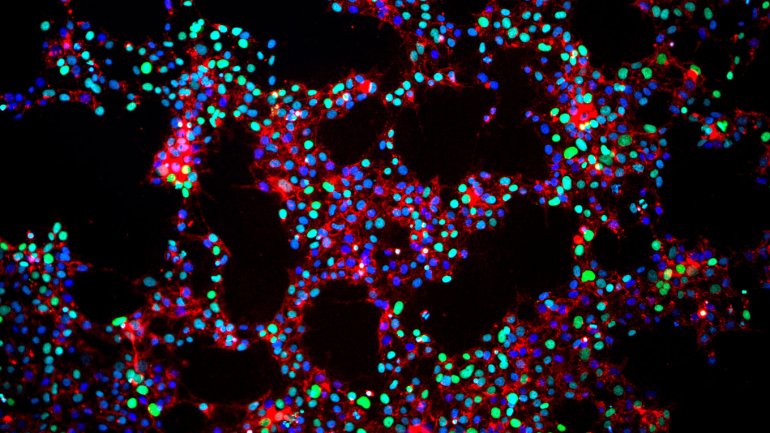
Human cortex grown in a petri dish. Eye diseases treated with retinal cells derived from a patient’s own skin cells. New drugs tested on human cells instead of animal models.
Research and emerging treatments with stem cells today can be traced to a startling discovery 10 years ago when Shinya Yamanaka, MD, PhD, and his graduate student Kazutoshi Takahashi, PhD, reported a way to reprogram adult mouse cells and coax them back to their embryonic state — pluripotent stem cells.
A year later, they accomplished the feat with human cells. For this research coup and his leading role pioneering stem cell work, Yamanaka — who holds academic appointments at Kyoto University and UC San Francisco — was the
The breakthrough provides a limitless supply of induced pluripotent stem cells (iPSCs) that can then be directed down any developmental path to generate specific types of adult cells, from skin to heart to neuron, for use in basic research, drug discovery and treating disease.
The achievement opened up a practical way — and in some critical cases, the only way — to directly study human «diseases in a dish," and track the early stages of both healthy and abnormal development. It also allowed researchers to screen new drugs directly in human cells rather than relying on animal models, which more often than not fail to accurately predict a new drug’s effects on people.
The dazzling iPSC breakthrough has spurred rapid progress in some areas and posed major challenges in others. It has already proved a boon to basic research, but applying the new technology to treat diseases remains daunting. Some types of cells have proved difficult to reprogram, and even the protocols for doing so are still in flux as this is still a very young field.
iPSCs in Basic Biomedical Research
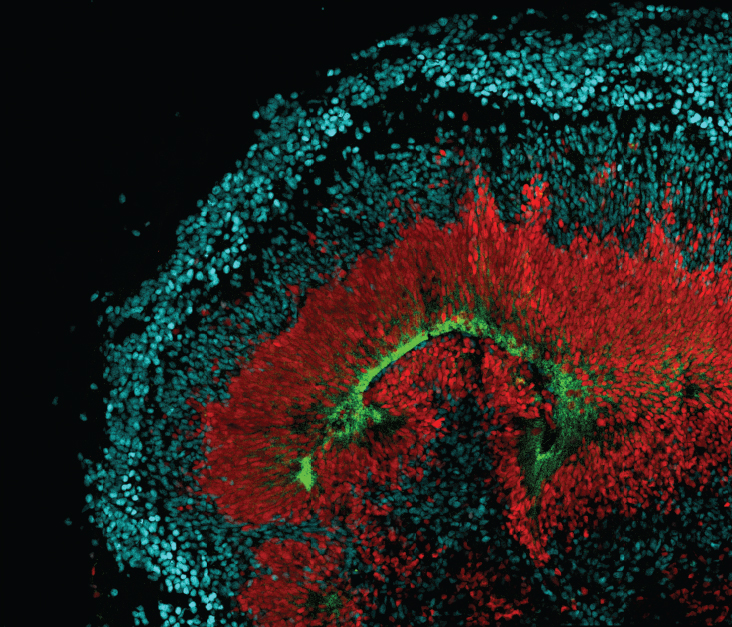
A human cortex organoid that’s grown in a lab dish. Image by Elizabeth DiLullo
For many basic biomedical scientists, the capability offered by iPSCs technology is like a dream come true, says neuroscientist Arnold Kriegstein, MD, PhD, director of UCSF’s Eli and Edythe Broad Center of Regeneration Medicine and Stem Cell Research.
«Induced pluripotent stem cells have given us a window into human development unlike anything we had before," Kriegstein said. «I’m interested in the early development of the brain’s cortex. Of course, we’ve never had unrestricted access to living human brain cells. Now we can take skin cells and grow human cortex in a dish. It’s a
Kriegstein is enthusiastic about what researchers can learn from «organoids» — a
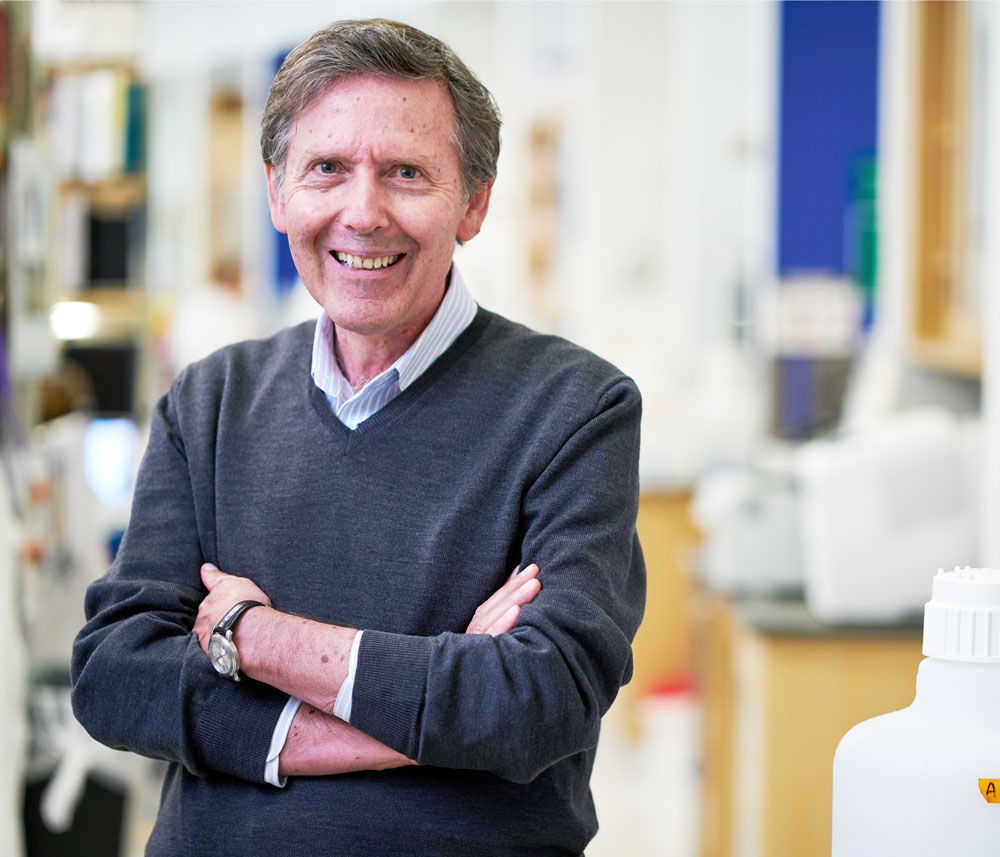
Arnold Kriegstein, MD, PhD, is head of UCSF’s Eli and Edythe Broad Center of Regeneration Medicine and Stem Cell Research
«It’s a very close model of the real thing," Kriegstein says. «We have recently discovered that even in this early stage, the organoids are able to develop intrinsic organization, including a
Some scientific papers have suggested that organoids can model diseases found in adulthood — even disorders of late adulthood such as Alzheimer’s disease.
Even though organoids can reveal developmental steps not seen before, Kriegstein worries that some researchers are getting too far ahead of themselves.
«It’s an embryonic brain," he stresses. «The longest period of growth we can model would be full fetal development. How likely is it that gene expression, cell signaling and a myriad of other interactions at this organoid stage could accurately represent the development of Alzheimer’s disease, a disease that affects people at 60 or 70?
«I think we need to take some of these studies with a grain of salt. Stem cell technology now is so variable that replication is difficult. We need to establish protocols to reliably compare different methods and then use these standardized methodologies to advance research and treatment. But I am 100 percent convinced that we will get there.»
Building on the Original Breakthrough
Yamanaka currently directs the

Shinya Yamanaka, MD, PhD, in his lab at the Gladstone Institutes. Photo by Chris Goodfellow/Gladstone Institutes
In their seminal work, Yamanaka and Takahashi had introduced four genetic factors to prompt adult cells back to the pluripotent state. Soon after their iPSC breakthrough, Sheng Ding, PhD, who has a lab at the Gladstone Institutes and is a professor in UCSF’s Department of Pharmaceutical Chemistry, began refining the reprogramming cocktail.
Eventually, Ding was able to substitute
Other recent advances to induce pluripotency harness different kinds of proteins that influence gene activity in the cell nucleus. Robert Blelloch, MD, PhD, a stem cell scientist at UCSF’s Broad Center, has shown that some small RNA molecules called microRNAs promote adult cell
He and colleagues have also become intrigued by the role of
The Promise of Treatments
Six years after Yamanaka’s iPSCs discovery, researchers in a very different field developed a new
«CRISPR has provided us with an extraordinary new capability," Kriegstein says. «It allows us to tease apart the genetic causes or contributors to developmental diseases. We can edit out mutations to determine if they are critical to early developmental defects.»
CRISPR’s speed and precision may some day allow stem cell researchers to reach their most ambitious goal: Genetically abnormal cells from patients with inherited diseases such as sickle cell anemia or Huntington’s could be reprogrammed to the pluripotent stem cell state; their genetic defects could be «edited» in a petri dish before being differentiated into healthy adult cells. These cells could then be transplanted into patients to restore normal function.
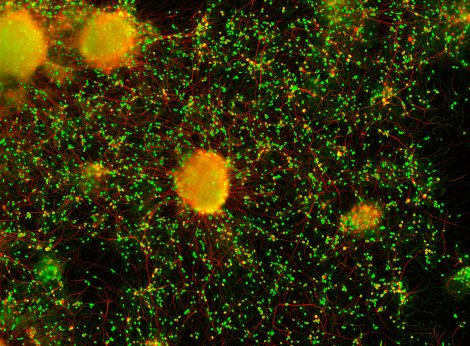
These iPSC-derived neurons were generated from tissue taken from human patients with Huntington's Disease. The hope for the future is that abnormal cells from patients with inherited diseases such as Huntington’s could be reprogrammed to the pluripotent stem cell state, "edited" using CRISPR and then transplanted into patients to restore normal function. Photo by Julia Kaye/Gladstone Institutes
While that goal is still beyond reach, many
One trial has already treated its first patient. In 2014, Japanese scientists made iPSCs from skin cells of a woman with macular degeneration and then differentiated them into adult retinal cells. Surgeons transplanted the retinal cells into her eyes in order to treat the disease — the first patient treated using iPSCs.
Researchers focused on the eye disease in part because differentiating stem cells into retinal cells has proven to be fairly straightforward compared to many other cell types, Kriegstein says. Also, it is relatively easy to transplant cells into the eye.
Preparations to treat a second patient using
The success of treatments relies in part on stem cells’ rapid rate of proliferation. Hundreds of billions of cells may sometimes be needed for a transplantation. But if just a few of the stem cells fail to differentiate into the target adult cells, they may reproduce rampantly when transplanted and form a tumor.
«It’s a
Research to ensure that all stem cells differentiate before transplantation is now one of the main issues in this field, he says.
To eliminate cancer risk, the researchers are now «deep sequencing» the genetic makeup of each of the stem cell lines they might use. They have also decided to use donor cell lines rather than the patient’s own cells. This avoids the very expensive prospect of having to carry out quality checks like deep sequencing of each patient’s own pluripotent cell lines.
Use in Drug Screening
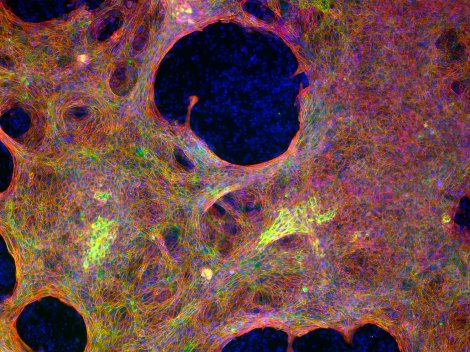
These cardiomyocytes were reprogrammed from normal adult human skin samples. Photo by Matt Spindler/Gladstone Institutes
The promise of treatment related to stem cells includes the promise of drug testing in adult human
One recent example is the work of Catherine Mummery, a neurologist at Great Britain’s National Hospital for Neurology and Neurosurgery, who used
«This was impressive," Kriegstein says. «It was an early
Other Sources, Old and New
Research using stem cells isn’t limited to IPSCs. In some respects, embryonic stem cells (ESCs) remain the gold standard. UCSF stem cell biologist Susan Fisher, PhD, sees
«They have less of a history than iPS cells. They carry less baggage," she says. But like Yamanaka and Kriegstein, she considers the field too young to declare the superiority of one strategy over the other.
A strong endorsement for tapping ESCs in transplantation medicine came two years ago when a Harvard team showed that cell lines derived from embryonic stem cells could produce unlimited supplies of
As of 2014, hundreds of clinical trials are underway in many countries, primarily testing safety and efficacy of treatments for diseases, from heart failure to Parkinson’s.
The two
This year, Deepak Srivastava, MD — director of cardiovascular and stem cell research at the Gladstone Institutes and a professor of Pediatrics and of Biochemistry and Biophysics at UCSF — and a team led by Gladstone’s Ding efficiently transformed mouse skin cells into brain cells as well as beating heart cells using a combination of chemicals. The approach could prove effective in efforts to regenerate dying or diseased cells and tissues, Ding says.
Ethics and Public Perception
As the science progresses on many fronts, Yamanaka has become concerned that the science has gotten far ahead of efforts to consider the ethics of some of the research.
«When we made iPS cells, our purpose was to overcome ethical issues of embryonic stem cells. Now we are creating new ethical questions," Yamanaka says. «We can now make sperm or eggs from iPS cells, at least in mice. We may be able to make human organs in pigs and other animals by injecting human iPS cells into animal embryos- creating
«The speed of scientific progress is getting faster and faster, so if we discuss the ethical issues slowly… this is a big concern. I have been asking many bioethicists to think about these issues more aggressively. Some think it’s science fiction. But it’s not for the future. It’s for ourselves.»
At the same time, he is concerned too about public perception that the rate of progress may be slower than expected.
«I am fascinated by how rapidly science is advancing. It’s amazing. But for the most part, developing new treatments — doing the science, testing the safety and effectiveness of new therapies — takes a great deal of money and many years," Yamanaka said.
«Developing new treatments may take 10 years, 20 years, 30 years. That is what we have been trying to say to our patients: ‘We are making great progress, so do keep up your hope. But it takes time.’»
Source: https://www.ucsf.edu/news/2016/09/404271/induced-pluripotent-stem-cells-10-years-after-breakthrough


